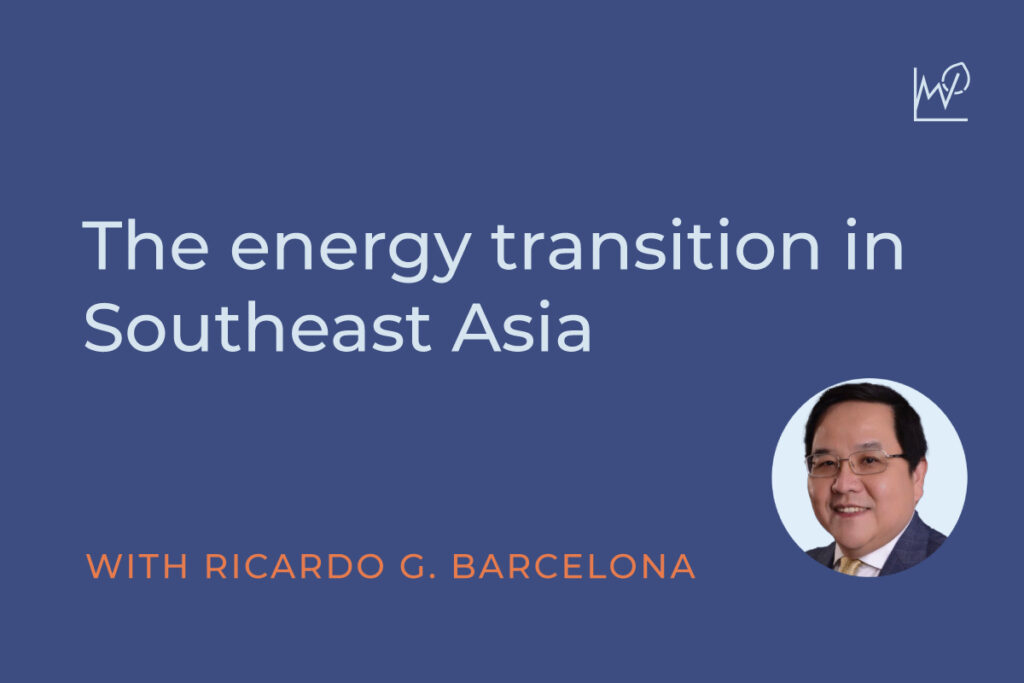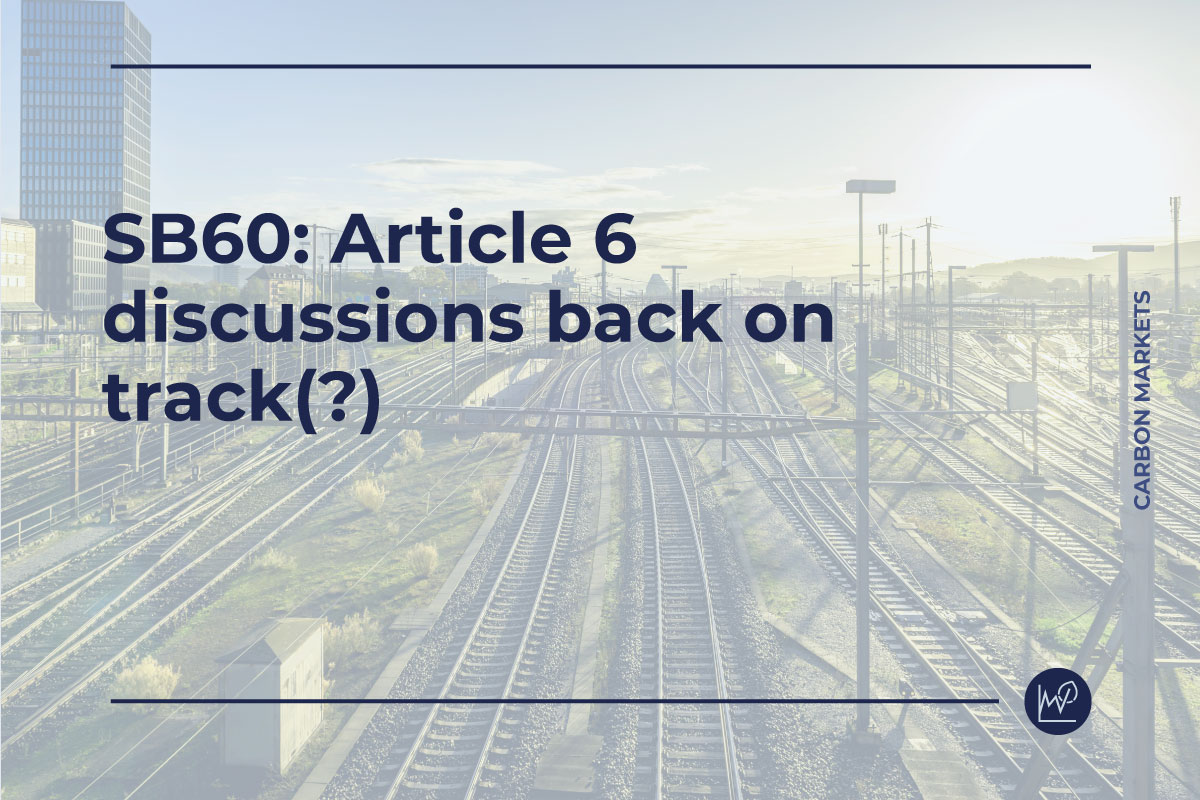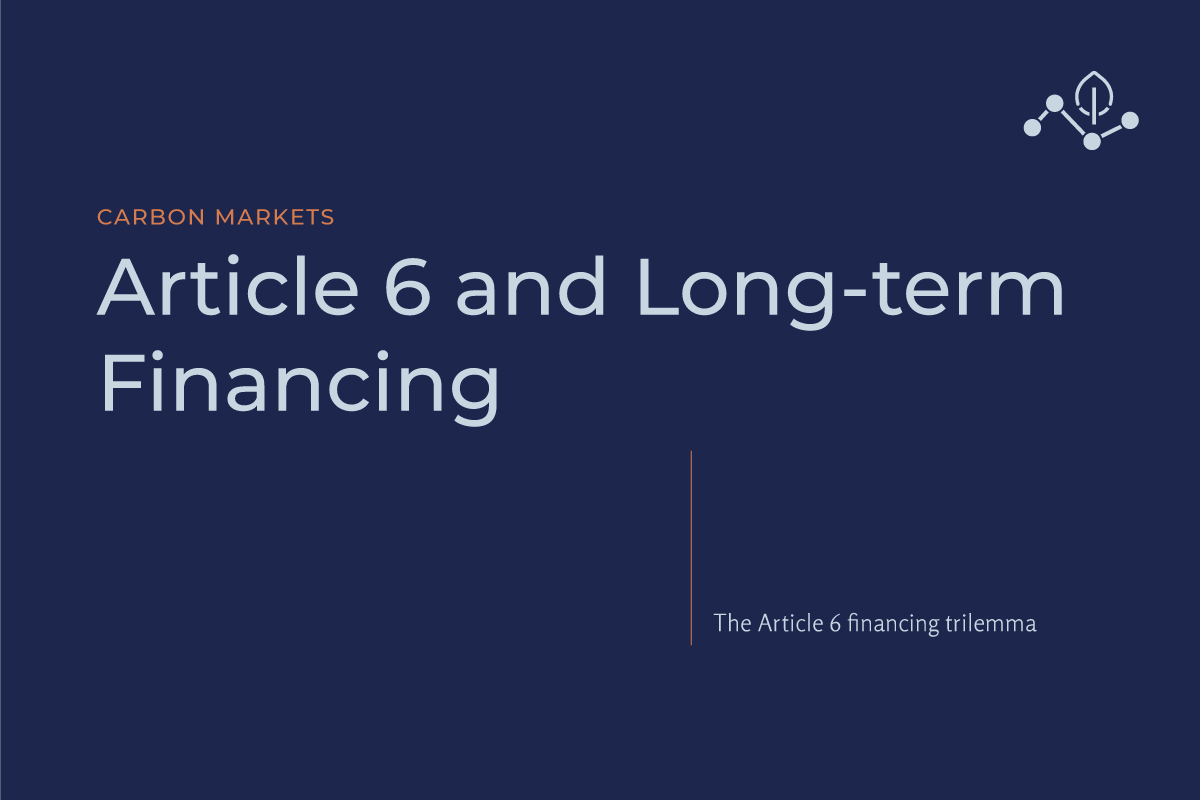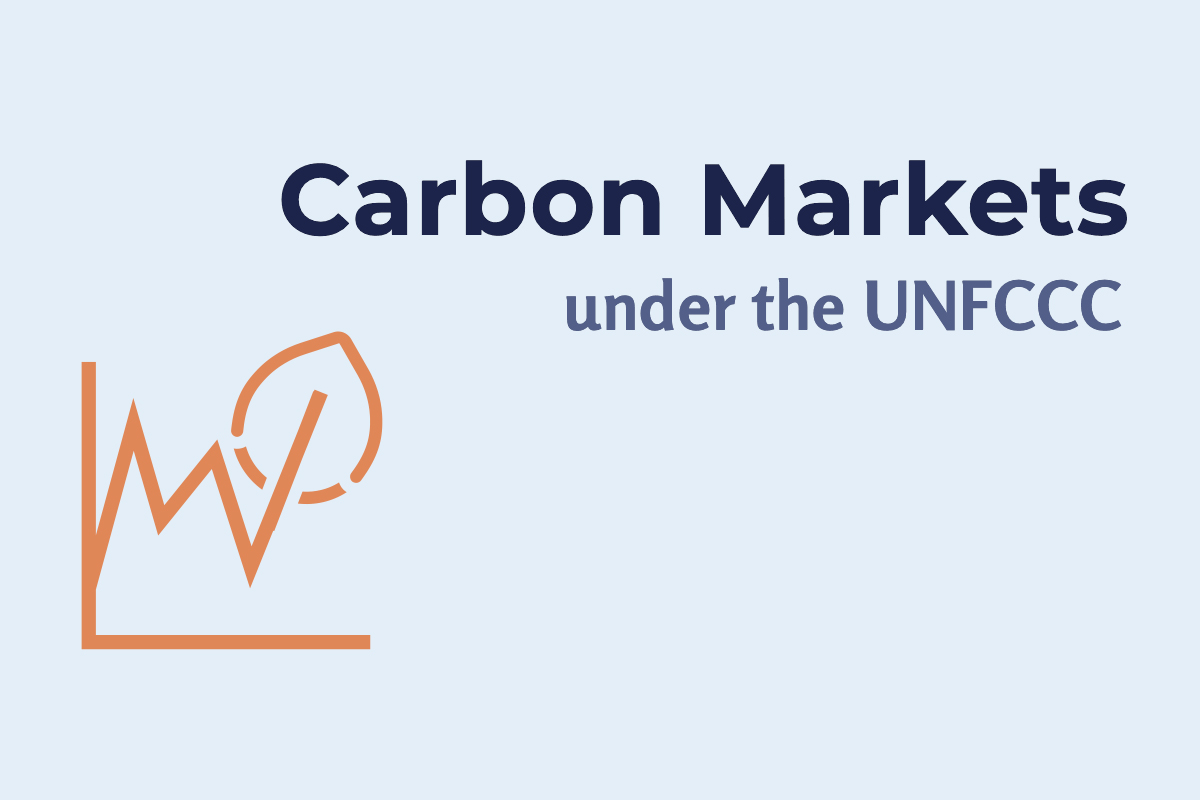We pose some questions to Dr. Ricardo G. Barcelona, PhD. Ricardo is an energy transition expert, author, adviser and academic.
Question: What are the main challenges for the energy transition in Southeast Asia?
Ricardo Barcelona: If by energy transition we mean replacing fossil fuels with low-carbon technologies, the diverse markets of Southeast Asia represent the following balancing acts:
- Supply security amidst rapid demand expansion and tight supplies: Fossil fuels such as coal or gas characterises centralised systems with high capacity factors, where each MW of installed capacity can generate high outputs in GWh that can be varied with demand fluctuations. In contrast, intermittent supplies such as wind and solar energy have low capacity factors with output reliant on wind flows or sunlight availability. A rapid transition to wind and solar may disrupt supplies by failures to rebalance the load in the grid. This raises the next challenge on grid quality, connectivity, and supply mix.
- Weak grid infrastructures and (some) market fragmentation: In most countries, grid losses and gaps in connectivity arise from limited transmission connectivities – particularly in archipelagic systems such as the Philippines and Indonesia. The push for wind and solar is a case in point – with some projects located in areas with limited transmission capacity, outputs are curtailed (or wasted) because it cannot be delivered to customers. Interventions by governments that favour wind and solar exacerbates this problem by distorting the supply mix.
- Supply mix and regulatory interventions: In pushing to subsidise solar, and to a lesser extent wind power, indigenous energy resources such as geothermal and hydro get less attention from policymakers. For these reasons, geothermal and hydro resources are not fully developed, while ignoring their inherent advantages. With capacity factors mimicking coal and gas, both energy resources are more readily integrated into extant grids with less adaptation. This significantly lowers cost of transitioning to low-carbon power generating technologies.
- Redistributive impact on income and wealth: Public funding support for coal and gas have two aspects: a) subsidies are disbursed to developers of reserves; with a return from b) royalty payments, once extraction starts with commercial operations. On balance, royalty payments tend to exceed the subsidies received. By contrast, wind and solar power subsidies do not have any royalty payments associated with them, hence a net outflow for governments paying the subsidies. This is where geothermal and hydro could alter the financing imbalance that wind and solar power create: Initial subsidies paid to geothermal developers are recouped from royalties upon the sale of geothermal steam. Hydro offers a similar “repayment” with royalties on the sale of water. On a broader societal context, there is a redistribution from coal and gas employment, which tends to be higher paying jobs, to wind and solar that tends to attract lower pay. Geothermal employees’ pay tends to be competitive with oil and gas, while hydro power depends on specific markets.
Q: Which countries in the region are most prepared to transition to a low-carbon economy?
RB: There are a number of ways to ascertain preparedness. Most observers, however, focus on the aspirations of countries to reduce their carbon footprints and what governments have declared. For this reason,
- Singapore is hailed for their research into innovative systems and technologies;
- Malaysia’s target to raise renewables to 20% by 2025;
- Vietnam and Thailand are racing to achieve 20% by 2030 and 30% by 2036 respectively;
- Indonesia, a major coal and oil producer, aims to cut CO2 emissions by up to 41% by 2030.
How these countries aim to fund their transitions – by subsidies in its various guises – means they may have to rethink their approaches. The weight of historical evidence is not promising – with subsidies alone often failing to achieve and sustain wide-scale deployment of low-carbon technologies.
This is where the Philippines comes to mind as the region’s Cinderella. Often justly criticised for its slow moving bureaucracy, the present Department of Energy has proven it can deliver on its promises. Working with the private sector, ACEN of the Philippines, largest renewables player, pioneered “capital recycling” by implementing the world’s first ever Energy Transition Mechanism (ETM). Offshore wind is initiated, coupled with changes in policy to support the development of “energy hubs” to build the infrastructures necessary for large scale deployment in tandem with site and wind resource validation works. For its efforts, the Philippines is gaining recognition from international investors as an emerging hotspot for low-carbon technologies deployment.
Indonesia is another country on my watch list. With energy markets continuing its reforms, pricing of energy resources such as power, geothermal, and renewables, could benefit from (higher) market-based pricing. To a large extent, socialised pricing of power, for instance, hide the cost of “low power price” policy. The unrecovered costs of supply are paid for by government that has become unsustainably high as a proportion of the public budget. By moving to a market-friendly pricing, low-carbon alternatives to coal can become financially viable with limited financial support from government, or even without subsidies (at the rate costs of renewables are falling).
Q: Some countries are betting a lot on CCS, hydrogen and other unproven technologies. Could this put Southeast Asia in a leading position or is it a recipe for disaster?
RB: I would rather look at this from a strategic approach, rather than from a context among countries competing to be first. Demand for CCS and hydrogen are premised on the benefits and desirability of decarbonising the energy system. CCS is presumed to reduce CO2 emissions by pumping CO2 into the ground, often at high expense. When it comes to hydrogen, physics would question the soundness of extracting H2 to fuel power generation. Specifically, 100kWh of energy is needed to produce the equivalent of 32 kWh of energy from H2 on the first run. Now, if one uses the 32 kWh of H2 to fuel hydrolysis, one gets involved in a “cycle of destruction”. It only makes sense when using excess from offshore wind that would otherwise be wasted as it is cheaper than storing it.
However, countries can experiment on smaller scales to validate the technological and economic viability. On a regional basis, such as ASEAN, some countries may opt to focus on research & development (R&D), link H2 with offshore wind deployment, CCS as adjunct to oil & gas production, or collaborative efforts among private sector investors.
Deployed on smaller scales, countries can adapt as technologies evolve without betting the farm at the outset. Throughout the process, promising technologies may be scaled, while those showing less prospects for achieving viability may be abandoned or reframed as earlier adopters learn more about the technologies.
In short, betting the farm when countries commit to a massive investment upfront is more likely to result in grief – a recipe for disaster. A bite-sized approach, combined with agile adaptation, has greater prospects to build leading positions in a number of technological or market niches.
Q: Which countries are better prepared for the transition; those with a better political system or those with easier access to technology?
RB: I would reframe this question in this way: Access to technologies is often dictated by the degree of market-friendliness of a country. This would imply that the regulatory system is supportive to investments, innovation, and primary research on new technologies. Under this system, private capital is likely to drive the energy transition, auguring for higher probability of success.
In contrast, government led efforts often falter given the rigidity in the policymaking ecosystem. That is, to change course for an adopted policy tends to be problematic. Even for the right reason, investors would see changes in policy as “regulatory risks” that attract a higher risk premium, hence increased financing costs or higher hurdle rates. Moreover, governments that show too much flexibility in policy implementation may be perceived as “high risk” given the uncertainty it creates in investors’ minds.
Private capital manages their business where managerial flexibility is seen as a virtue. That is, as market circumstances change, managers are expected to adapt and change course as needed. This flexibility is valued given that it provides managers the ability to avoid making losses, or ramp up business or investments to take advantage of rising markets.
Recognising these diametrically opposed incentives, a market where regulators “regulate with the market” is more likely to attract investments based on its economic merits. With ample investments flowing in, a transition to low-carbon energy systems can prove profitable – thereby kickstarting the virtuous cycle of rising capital leading to scaling adoption, and with a proven record of success, consolidates a country’s leading position as a dominant hub for technological innovation and adaptation.
Q. Finally, could you share some key insights or strategies from your books that policy makers or business leaders can apply to navigate the energy industry more effectively?
RB: Some advocates of human-induced climate change point to a “consensus of science”. Voices such as Steven Koonin, Barack Obama’s undersecretary of energy for science, or Dieter Helm of Oxford University question this assertion, suggesting that science remains unsettled. To a decision-maker, what is at issue is not so much what part of climate science has achieved consensus or not. Rather, it is how an evolving conversation on climate science could influence policy-making, and how this is likely to see certain measures being implemented.
Taking this as a backdrop to corporate strategy, tackling the uncertainties around expected outcomes are primordial to managerial decision-making. In Dynamic Decisions, I posit that while there is virtue in “planning for success”, where everything works according to plan, knowing how to regroup when things turned out differently is perhaps more important. This requires agility that enables managers to adapt, or change course, profitably by avoiding losses when markets turn adverse or ramp up to seize the upside of robust demand. In this way, the conversations on climate variations are made tangible by connecting its effects on how a firm’s business would perform – a core concern of any corporate managers. As a result, climate conversations are no longer the esoteric domain of academics and advocates. It is now a relevant aspect of today’s strategic actions that drives managers to repurpose, reframe, and reconfigure how their firms could meet society’s future energy needs.
To operationalise I have illustrated how I propose energy transitions could be turned into an opportunity to create tomorrow’s profitable niches today. How do you get this virtuous cycle started?
I would start with what I know – in terms of what I have, the resources available, and my core competencies. I would map this against a number of scenarios that one could imagine, including the “black swan” or “outliers” in relation to prevailing or “accepted wisdoms”. Armed with these insights, I could start a process to repurpose what I have to reposition my “arsenal” against some of the scenarios. This may involve redeploying or upskilling human resources, divesting obsolescing or acquiring new businesses, or reinforce what could emerge as core comeptencies of tomorrow’s market.
One moves to reframe how we can meet the needs of tomorrow’s society by experimenting with a number of emerging prospects or technologies. Given that we are unlikely to know what the future would look like, we can have the comfort in appreciating that what we do today may influence how the future would evolve. This is where the concept of “affordable losses” could be incurred. That is, one can invest in small amounts to test a technology’s viability, and how it “behaves” under different circumstances. What we learn is our tuition fee (or the cost of information). Failed experiments are valuable – they at least tells us what does not work, and why it failed, to inform the next experiment.
As technologies and markets evolve, one commits to a path (or a number of pathways) that can reconfigure how one satisfies society’s energy needs.
For more on this, please refer to this chapter of my book Dynamic Decisions.
About
Dr Ricardo G Barcelona is author of two ground-breaking books on energy: Dynamic Decisions: Energy PIVOT, Adaptive Moves, Winning BOUnCE, published by World Scientific Publishing, London (2022); and Energy Investments: An adaptive approach to profiting from uncertainties, published by Palgrave Macmillan, London (2017). He obtained his PhD in Management from King’s College London, United Kingdom.
His research focuses on energy and investment decisions under uncertainty, combining academic rigour and senior leadership experiences at Royal Dutch Shell, Netherlands and London, to extract strategic insights from his works. As an investment banker in London, he was consistently voted top rated equity analyst and adviser for European utilities whilst at SBC Warburg and ABN AMRO/Rothschild.




